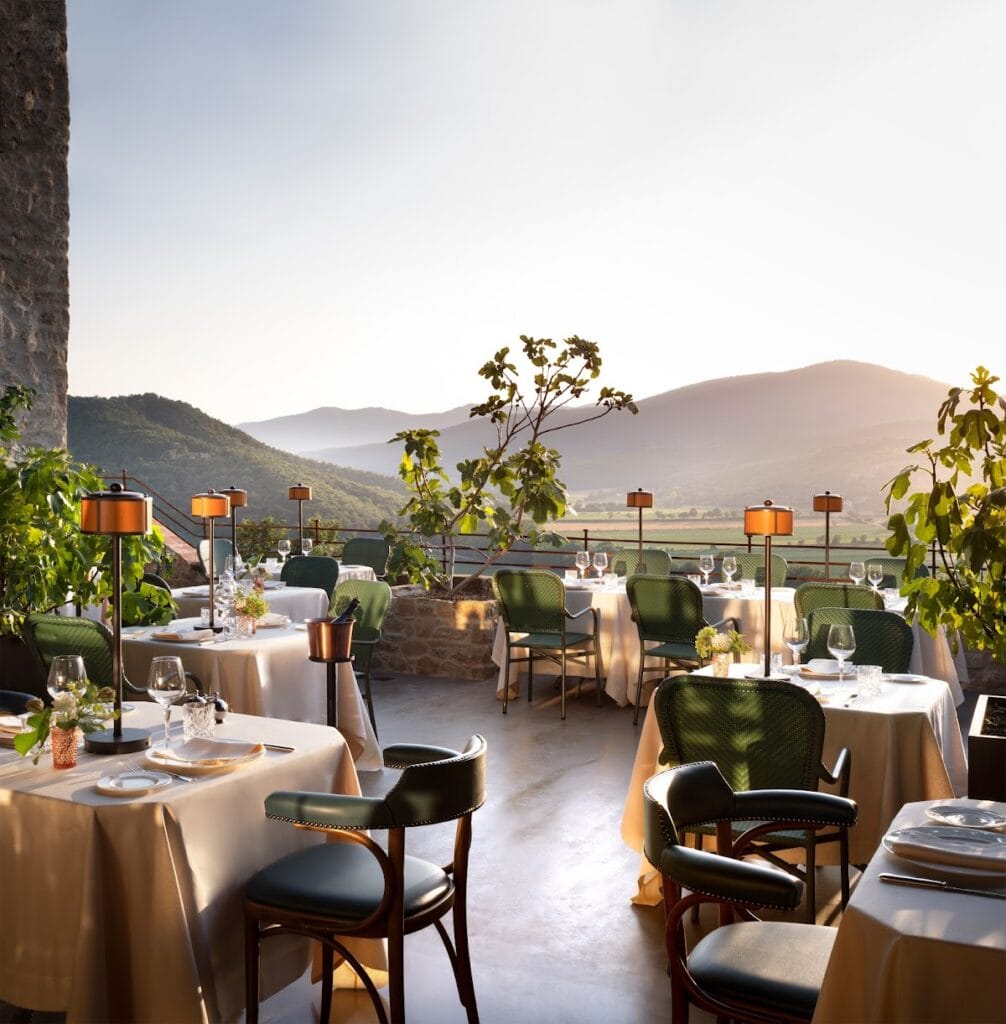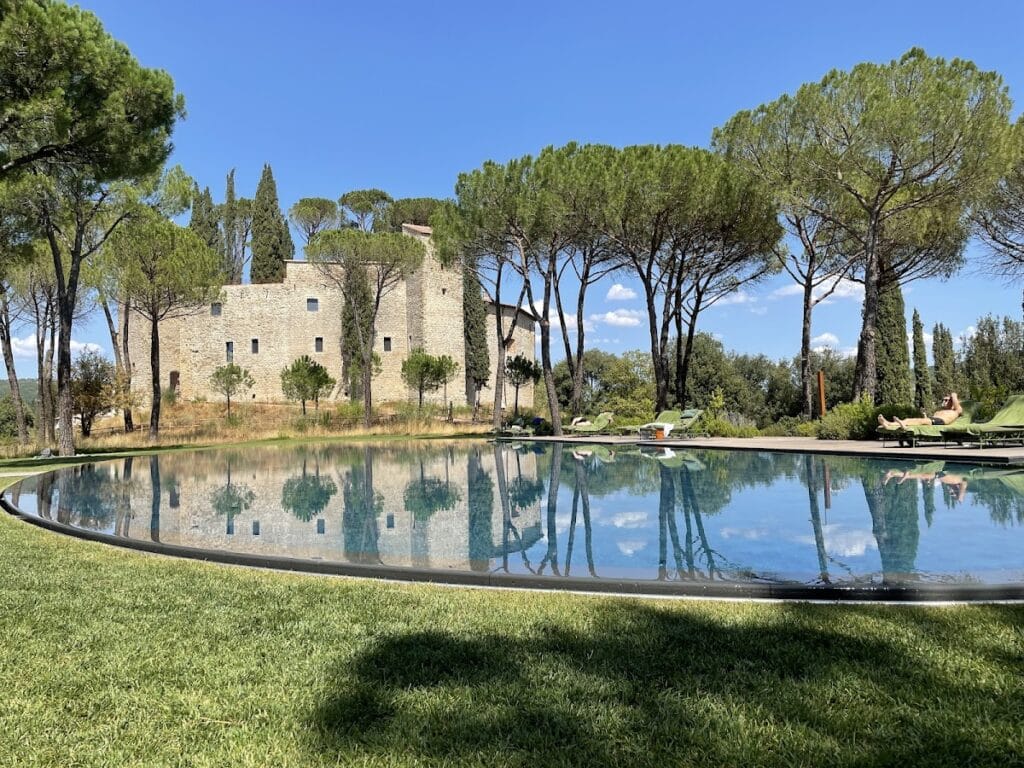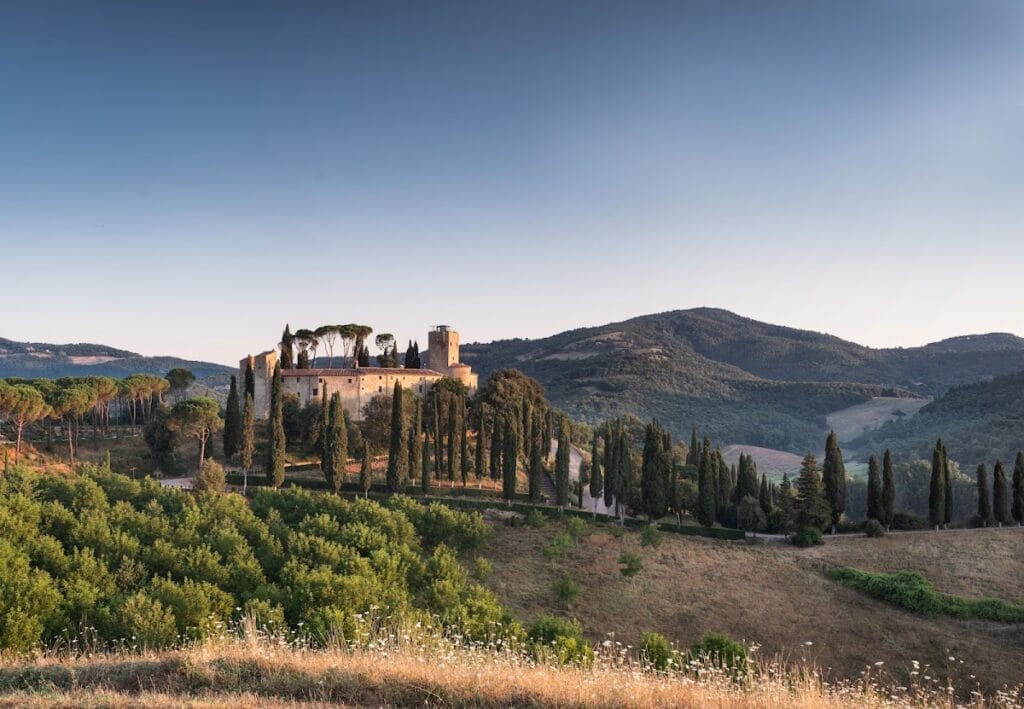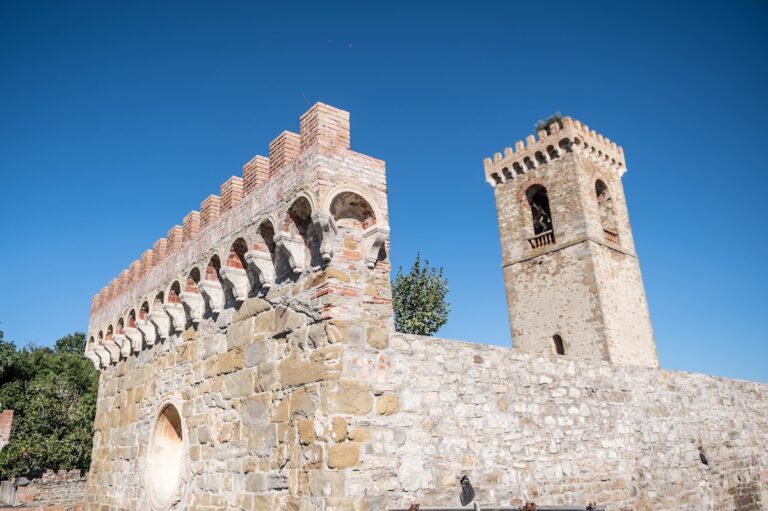Castello di Reschio: A Historic Fortification in Lisciano Niccone, Italy
Visitor Information
Google Rating: 4.7
Popularity: Low
Google Maps: View on Google Maps
Official Website: www.reschio.com
Country: Italy
Civilization: Unclassified
Remains: Military
History
Castello di Reschio is located in the municipality of Lisciano Niccone, Italy. Its origins trace back to the late Roman Empire, where the area bore the name “Resculum,” a toponym that preserved its early roots. The current fortification is believed to have been established between the 9th and 11th centuries during a period known as “incastellamento,” when many fortified settlements arose in the region to provide defense and administrative control near the border with Tuscany.
The earliest reliable written record dates to May 3, 1202, when Uguccione di Ranieri, a member of the Marchesi del Monte Santa Maria family, submitted the castle of Reschio and surrounding strongholds to the authority of Perugia. This act may have formalized a vassal relationship, possibly building upon an earlier imperial grant by Frederick Barbarossa, underscoring the castle’s strategic and political importance at the time.
In 1355, Emperor Charles IV officially invested Ugolino and his nephews with Reschio and other holdings, confirming their privileges while exempting them from local city obligations. This elevated Reschio to a sovereign imperial feud, with Ranieri di Ugolino adopting the title Marquis of Reschio, marking the inception of the marquisate. A decade later, in 1365, the castle passed to the Montemelini family of Perugia through Antonia, the granddaughter of Ranieri. Antonia defended her inheritance vigorously against family disputes over ownership, demonstrating the castle’s continued significance as a power center.
The late 16th century brought notable shifts when Fulvio Montemelini placed the feud under the protection of the Grand Duke of Tuscany in 1593. This act provoked controversy, and Fulvio was condemned by the Pope for displaying the Medici family coat of arms on the castle’s gate, highlighting the tension between local and broader political authorities.
In 1601, ownership changed hands when Count Niccolò Montemelini sold Reschio to Bishop Angelo Cesi of Todi. Bishop Cesi later gifted the castle to his nephew Venanzio Chiappino, commemorated by an inscription above the entrance that marks this transfer. Later, on December 5, 1678, Count Prospero Cimarra acquired the property from the Duke of Acquasparta for 25,000 scudi but was compelled to relinquish it due to debts owed to the Apostolic Chamber.
By May 27, 1692, Cardinal Carlo Bichi purchased the county for 23,000 scudi on behalf of his nephew, Marquis Galgano Bichi of Siena. The Bichi family maintained the estate for over two centuries, contributing to local development, including establishing the first elementary school in the 1920s.
In 1932, the estate was sold by Marquis Ridolfo Bichi Ruspoli Forteguerri to Professor Angiolo Maria Cenciarini for 800,000 lire. Under Cenciarini, the property saw the expansion of tobacco cultivation and processing, linking the estate to agricultural innovation of the period. The 1970s marked another change when the Counts Bosca di Roveto took ownership and undertook renovations that revealed historic stone artifacts by removing interior plaster work.
Since 1984, the Bolza family—Austro-Hungarian nobility with Italian roots—has owned Castello di Reschio. They have embarked on extensive restoration and requalification efforts, seeking to preserve the castle’s architectural and historical legacy.
Remains
Castello di Reschio occupies a strategic position perched atop a hill overlooking the Val di Pierle and along the Niccone stream’s right bank. It forms part of a historic network of fortifications close to the border with Tuscany, designed to defend the region and exert territorial control. The castle’s defensive structure centers on a single entrance gate that controls access, surrounded by a curtain wall—a continuous defensive barrier protecting the enclosure.
Within these walls, several towers once played crucial roles in surveillance and defense, standing sentinel over the surrounding landscape. The presence of a noble residence inside the fortified enclosure reflects the dual function of the site as both a military stronghold and a seat of local governance.
One of the notable features is an inscription positioned above the castle’s main entrance. This stone carving commemorates the transfer of the estate to Venanzio Chiappino, the nephew of Bishop Angelo Cesi, serving as a durable record of the castle’s passage into their hands in the early 17th century.
Renovation efforts in the 1970s uncovered additional historical layers when stripping away internal plaster in the castle courtyard revealed stone artifacts embedded in the masonry. These lapidary finds attest to the castle’s long and varied construction phases, providing physical evidence of its medieval origins and later modifications.
The estate also includes multiple farmhouses, known locally as poderi, that have remained integral to the property over time. These agricultural buildings attest to the castle’s role not only as a military and noble residence but also as a center of rural economic activity.
Constructed primarily with stone masonry, these structures highlight traditional building techniques of their eras. Restorations have helped uncover and preserve these materials, ensuring that key architectural and archaeological evidence remains accessible and visible today.










